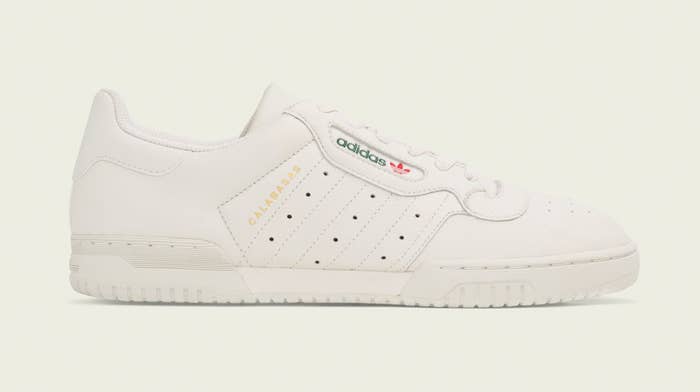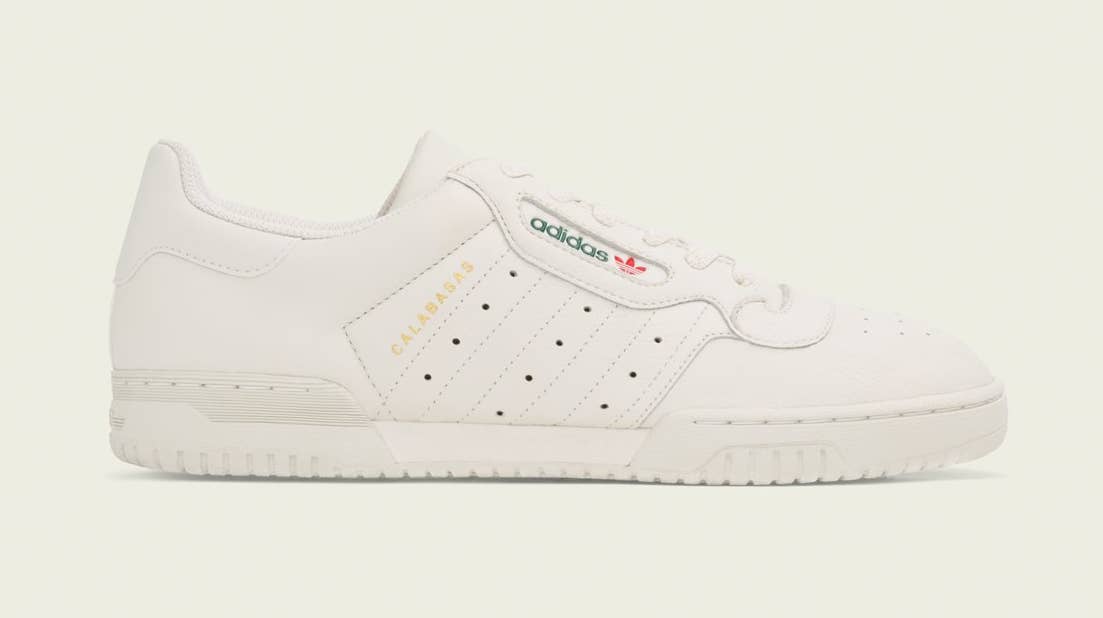
Back in March, the Adidas Yeezy Powerphase was a thousand-dollar sneaker. Well, the shoe was originally a $120 model at retail, but resale prices occasionally hit the four-figure mark. Today, pairs can be had for under $300. What happened to so dilute the amount that people are willing to pay for this Kanye West take on a retro Adidas model?
A restock happened. Upon this sneaker's first release, it was one of the more difficult Yeezy shoes to date to get, with pairs releasing only on West's Yeezy Supply website. While the design is relatively plain in comparison to the futuristic releases fans have come to expect from Kanye West and Adidas via the Yeezy Boost line, it was fetching big money nonetheless because of the narrow scope its of launch. At the end of May, leaker account Yeezy Mafia revealed that the sneakers would be coming back on June 4. As the date neared and more stores announced that they'd have stock, prices tumbled while resellers realized the sneakers wouldn't be as limited as they'd originally presumed.
"Once it was announced as a restock and we knew it was coming back out and it was going to be the same exact shoe, we knew resale values would drop," Josh Luber, founder of reselling platform StockX, tells Sole Collector. "In fact, prices started to drop before the shoe even came out."
Luber says the market reacted exactly how he expected it to. While pairs on StockX sold for as high as $1,150 at the sneaker's price peak, he's seen them sell for as low as $217 following this weekend's wider release. The prices won't necessarily stay that low, though—the market is usually flooded with pairs just after a release, and with them comes a crowded marketplace of sellers willing to undercut each other to ensure a profit.
Yu-Ming Wu, CMO at sneaker consignment resell shop Stadium Goods, thinks that prices will creep back up because the Yeezy connection is enough to establish a solid, enduring resell price in any pair of shoes.
"I think it's temporary," Wu said of the current bottom of Powerphase resell prices. "Nine months [after the release]—that's basically my thought on when prices start to get really high."
According to Wu, Stadium Goods anticipates restocks like this by working with sellers to adjust prices ahead of restocks that may affect the market.
This sort of crash isn't entirely new with respect to coveted Adidas product. The Adidas NMD "OG" once went for well over $1,000; the sneakers can be had for under $400 at Stadium Goods after a restock that brought more pairs to market over a year after the shoe's initial release. It's even affected Yeezys before: Luber says that the 2016 re-release of the "Pirate Black" Adidas Yeezy 350 Boost killed price growth on the shoe, stopping it from hitting $3,000. Sales for most sizes are hovering right around $1,000 now, according to StockX figures.
Another litmus test of how much restocks shift secondary market prices should happen soon with the June return of the "Zebra" Adidas Yeezy 350 Boost V2. That colorway is easily one of the most limited Yeezy Boosts yet, but it's possible the sneakers just won't be that sought-after if Adidas delivers a massive number of pairs.
In some backward way, this practice delivers on West's oft-repeated promise that "eventually everybody who wants to get Yeezys will get Yeezys." By bringing sneakers back and keeping their resell prices volatile, Adidas has been able to drive demand down around some pairs, resulting in slightly more palatable prices for the rapper's much-hyped footwear.

